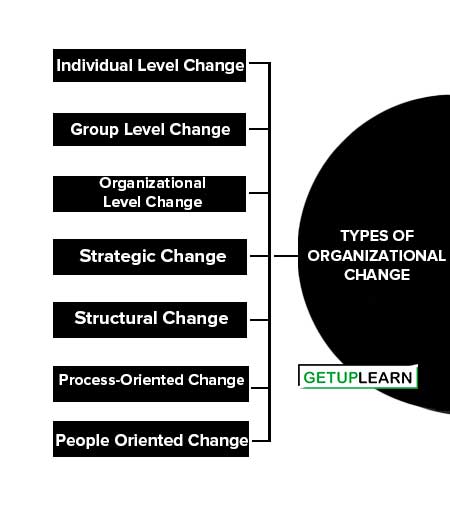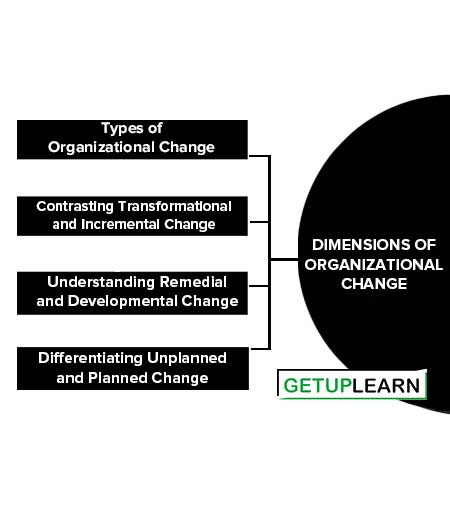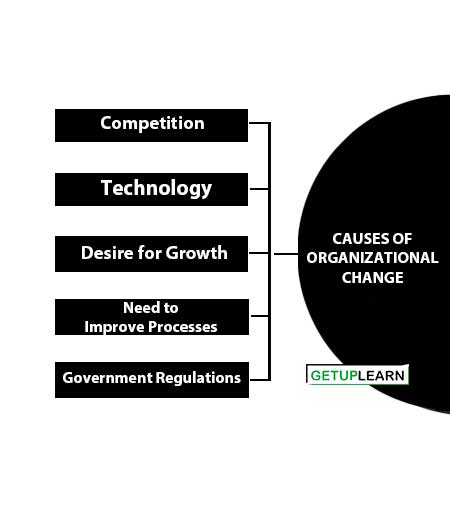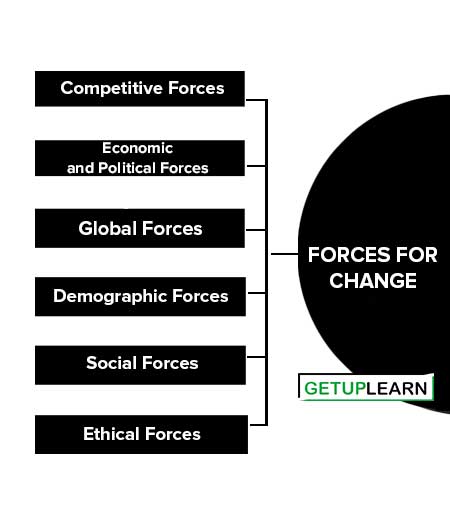For organizations, the last decade has been fraught with restructurings, process enhancements, mergers, acquisitions, and layoffs all in hopes of achieving revenue growth and increased profitability.
This all leads to change. While the external environment (competitive, regulatory, and so on) will continue to play a role in an organization’s ability to deliver goods and services, the internal environment within the organization will increasingly inhibit it from delivering products required to meet the demands of the marketplace unless it is able to adapt quickly.
Many employees believe that a change is often reactive and nothing more than a quick fix; then they brace themselves for more changes in the future.
Management needs to realize that serious underlying problems in organizations must be addressed with long-term consequences in mind. Thus, when management implements changes, careful thought must be given to ensure that the new processes are for the long-term good of the company.
Table of Contents
Types of Organizational Change
These are the various types of organizational change:
- Individual Level Change
- Group Level Change
- Organizational Level Change
- Strategic Change
- Structural Change
- Process-Oriented Change
- People Oriented Change

Individual Level Change
Individual level changes may take place due to changes in job assignment, transfer of an employee to a different location, or the changes in the maturity level of a person which occurs over a passage of time. The general opinion is that change in the individual will not have significant implications for the organization.
But this is not correct because individual-level changes will have an impact on the group which in turn will influence the whole organization. Therefore, a manager should never treat the employees in isolation but he must understand that the individual level change will have repercussions beyond the individual.
Group Level Change
The groups in the organization can be formal groups or informal groups. Formal groups can always resist change for example; trade unions can very strongly resist the changes proposed by the management. Informal groups can pose a major barrier to change because of the inherent strength they contain.
Changes at the group level can affect the workflows, job design, social organization, influence, and status systems, and communication patterns.
The groups, particularly the informal groups have a lot of influence on the individual members of the group. As such by effectively implementing change at the group level, resistance at the individual level can be frequently overcome.
Organizational Level Change
Organizational change involves major programs that affect both individuals and groups. Decisions regarding such changes are made by the senior management. These changes occur over long periods of time and require considerable planning for implementation. A few different types of organization-level changes are:
Strategic Change
Strategic change is the change in the very basic objectives or mission of the organization. A simple objective may have to be changed to multiple objectives. For example, a lot of Indian companies are being modified to accommodate various aspects of global culture brought in by multinational or transnational corporations.
Structural Change
Organizational structure is the pattern of relationships among various positions and among various position holders. Structural change involves changing the internal structure of the organization.
This change may be in the whole set of relationships, work assignments, and authority structure. Change in organizational structure is required because old relationships and interactions no longer remain valid and useful in the changed circumstances.
Process-Oriented Change
These changes relate to recent technological developments, information processing, and automation. This will involve replacing or retraining personnel, heavy capital equipment investment, and operational changes. All this will affect the organizational culture and as a result the behavior pattern of the individuals.
People Oriented Change
People-oriented changes are directed towards performance improvement, group cohesion, dedication, and loyalty to the organization as well as developing a sense of self-actualization among members.
This can be made possible by closer interaction with employees and by special behavioral training and modification sessions. To conclude, we can say that changes at any level affect the other levels. The strength of the effect will depend on the level or source of change.
Dimensions of Organizational Change
Organizational change can seem like such a vague phenomenon that it is helpful if we can think of change in terms of various dimensions as described below:
- Types of Organizational Change
- Contrasting Transformational and Incremental Change
- Understanding Remedial and Developmental Change
- Differentiating Unplanned and Planned Change

Types of Organizational Change
Organization-wide change encompasses major restructuring, collaboration, or “rightsizing” and is necessary for evolving to a different life cycle stage, such as transitioning from a reactive to a stable organization. Successful organizational change involves cultural transformation. Subsystem change involves adding or removing products or services, department reorganization, or implementing new processes.
Contrasting Transformational and Incremental Change
Transformational change entails altering an organization’s structure and culture fundamentally, such as moving from a hierarchical setup to self-directing teams. Incremental change involves continuous improvement, quality management processes, or adopting new technology for greater efficiency.
Understanding Remedial and Developmental Change
Remedial change aims to address current issues, like improving product performance, reducing workplace burnout, or resolving budget deficits. Developmental change, on the other hand, seeks to enhance success further by expanding customer reach or duplicating successful products. Sometimes, distinguishing between remedial and developmental projects can be subjective.
Differentiating Unplanned and Planned Change
Unplanned change occurs suddenly due to unexpected events, prompting reactive and disorganized responses from the organization. Examples include the sudden departure of a CEO, public relations crises, loss of customers due to poor product performance, or other disruptive situations.
Causes of Organizational Change
Every organization goes through periods of transformation that can cause stress and uncertainty. To be successful, organizations must embrace many types of change.
Businesses must develop improved production technologies, create new products desired in the marketplace, implement new administrative systems, and upgrade employees’ skills. Organizations that adapt successfully are both profitable and admired.
The businesses that continue to survive and even thrive are usually the ones that most readily adapt to change. A variety of factors can cause a business to re-evaluate its methods of operation, these are causes of organizational change as follows:

Competition
The entrance of a new competitor into a market can cause a business to change its marketing strategy. For example, a small electronics store that was the only game in town might have to change its image in the marketplace when a large chain store opens nearby.
While the smaller store might not be able to compete in price, it can use advertising to position itself as the friendly, service-oriented local alternative.
Technology
Innovations in technology can force a business to change just to keep up. Employees who have never used computers need to be trained to operate the new computer system.
A business also can benefit by implementing a technological change. According to the Hotel Online website, the airlines’ introduction of email ticketing has resulted in increased efficiency and better customer service while meeting little customer resistance.
Desire for Growth
Businesses that want to attain growth might need to change their method of operations. For example, the Subway sandwich chain started as a small business under a different name in 1965 and struggled through its first several years.
The company began to flourish after it changed its name to Subway in 1974 and began to sell franchises. According to the Entrepreneur website, there were 22,525 Subway franchise units in the United States as of 2009.
Need to Improve Processes
A business might need to implement new production processes to become more efficient and eliminate waste. In 2003, Cigna Healthcare implemented a leaner production process known as Six Sigma to improve service and reduce operating costs.
In 2006, the company was recognized by the J.D. Power independent rating organization for its high level of service and quality.
Government Regulations
Changes in government regulations can have an impact on how a company does business. Newly mandated safety procedures can force a factory to change its production process to create a safer work environment. Businesses that make or distribute consumer goods such as food products might have to add more quality control measures to ensure consumer safety.
Forces for Change
This section will discuss the key forces that drive companies to consider changes to their human resources, functional skills, technology, and organizational structure.
The need to undertake some form of organizational change can arise from any of the same forces that define the environment in which companies must compete: competitive forces, economic forces, political forces, global forces, demographic forces, social forces, and ethical forces.
Examples of how each of these forces can impact organizational change include the following:
- Competitive Forces
- Economic and Political Forces
- Global Forces
- Demographic Forces
- Social Forces
- Ethical Forces

Competitive Forces
This force generally requires actions that will allow the company to keep up with and surpass the skills of competitors with respect to efficiency (e.g., cost of production), innovation, and product quality and reliability.
Economic and Political Forces
Economic and political forces continuously impact the market conditions and rules under which companies produce and sell their goods and services and will cause them to reconsider how and where they engage in production and sales activities.
The rise of economic and political unions and the increasing use of free trade agreements have changed traditional notions of market entry strategies and provided foreign competitors with new advantages.
Global Forces
Global environments are clearly important as companies expand into new foreign markets with different languages, cultures, and business practices.
Changes in the organizational structure will be required in order to allow companies to continue to achieve the economies of scale and other advantages associated with global strategies while simultaneously acting like a local firm in foreign markets and satisfying the specific requirements of customers in each country.
Demographic Forces
Demographic forces are important for internal and external factors of companies. In the workplace, companies must address the rising levels of diversity among personnel and must create and effectively administer managerial and reward systems that take into account the needs and expectations of employees drawn from a wide demographic spectrum.
In the marketplace, companies must be prepared to tailor their products and services to the unique demands of specific demographically defined customer groups.
Social forces have a substantial impact on what employees expect and want out of their careers and the companies they select for employment.
Employees have a keener interest in lifestyle balance that employers must consider accommodating and firms must also be prepared to offer employees more opportunities for professional development through training and job rotation.
Ethical Forces
Ethics are continuously pushing companies to embrace socially responsible business practices and act in an honest and ethical manner.
Laws and regulations pertaining to ethical behavior have proliferated in the United States and in many foreign countries and companies must establish and follow internal rules and procedures to ensure that laws are obeyed and ethical problems are brought to light, independently reviewed, and positively resolved.
Ethical forces are also at work when companies develop strategies to carry out their activities in ways that preserve the environment and respect the human rights of others.
FAQs About the Types of Organizational Change
What are the types of organizational change?
Individual Level Change, Group Level Change, Organizational Level Change, Strategic Change, Structural Change, Process-Oriented Change, and People Oriented Change are the types of organizational change.
What are the causes of organizational change?
These are the causes of organizational change: Competition, Technology, Desire for Growth, Need to Improve Processes, and Government Regulations.
What are the 6 major forces of change?
In this article, we have explained 6 major forces of change: Competitive Forces, Economic and Political Forces, Global Forces, Demographic Forces, Social Forces, and Ethical Forces.
